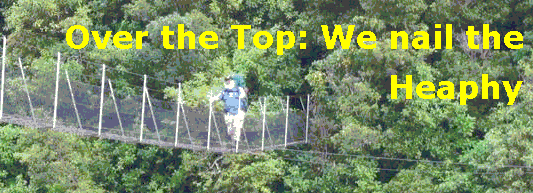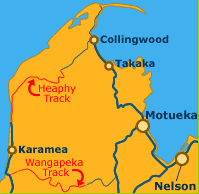The next little bit reminds me very much of the Karekare-Pararaha walk where a combination of westerlies and high cliffs has built up a huge dune which the wind, rebounding off the cliffs prevents from actually reaching the cliffs.
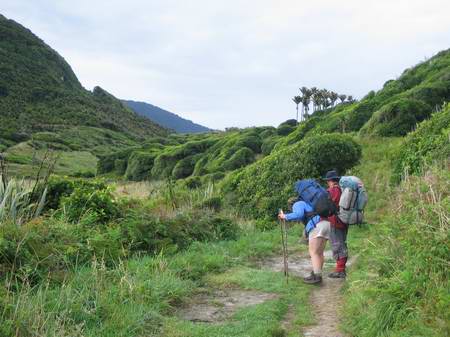
The rain dropped on the hills behind has formed a large swampy lake filled with raupo, and the vegetation all looks as though it is shaped by a prevailing easterly wind.
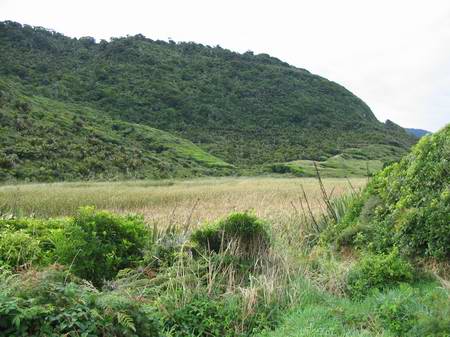
Just ahead of us the surf crashing onto the beach has generated a dense mist.
There are ripe blackberries beside the track and I help myself.
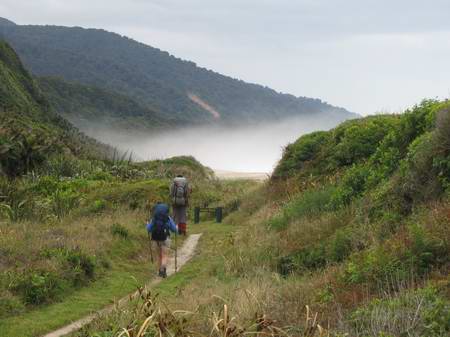
The nikau, compared with most of the specimens up our way are huge. I am interested as to why they do not play a larger part in the coastal vegetation of the North Island West Coast. I do note that they are a significant feature in the regenerating Mt Auckland forest reserve.
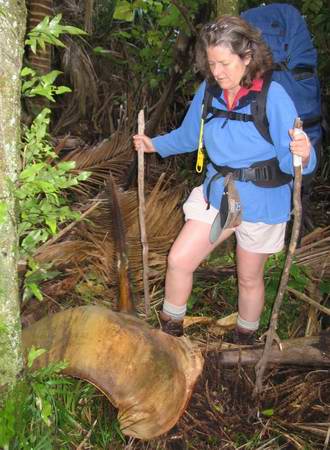
There is one feature which concerns me a little — Ongaonga (Urtica ferox), the New Zealand nettle, beside which the English garden nettle is as a household pussy cat to a tiger, grows profusely along most of the coastal track, and is an active discouragement to popping out from the track to the beach along the way.
As a full grown shrubby tree it has killed the occasional hunter or tramper who has blundered into it while bush-crashing and a long way from care. In any case a serious contact is usually a hospital matter.
Yet it grows freely along here and close enough to the path for DOC officers to regularly trim bits that overhang. There are some bits wilting on the path as we walk along.
Be aware of it and keep clear.
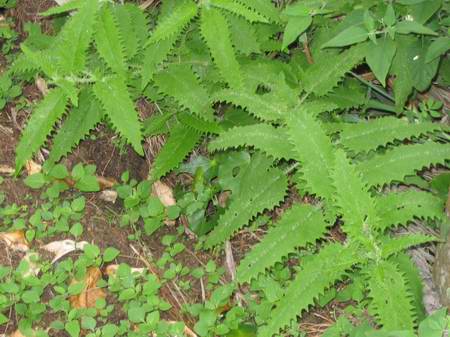
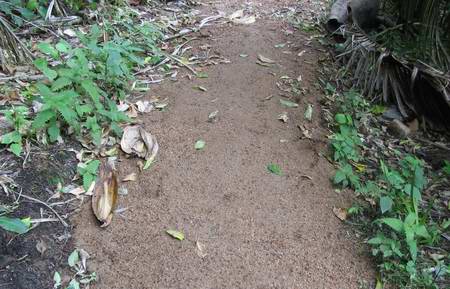
|
Tree Nettle or Ongaonga (Urtica ferox) of New Zealand. H.E. Connor (1977), in The Poisonous Plants in New Zealand, ed. 2, describes the case of an apparently healthy young man who hurried unheedingly through a patch of this nettle. A delayed reaction occurred, with paralysis and breathing difficulties after one hour and death in five hours.
The described symptoms read very like anaphylactic shock, the dangerous condition that occurs in certain sensitive individuals if substances such as bee venom, peanuts, or penicillin get into the blood stream.
The Tree Nettle is known to contain substances in the venom additional to that found in the garden nettle, and as also noted above, it sometimes causes fatalities in horses and dogs
Not everybody is as susceptible as the young man described above. Some sources describe simply a "numbing sensation lasting several days."
The time and place to experiment is not when you are many hours distant from a hospital with no cell-phone coverage. |
